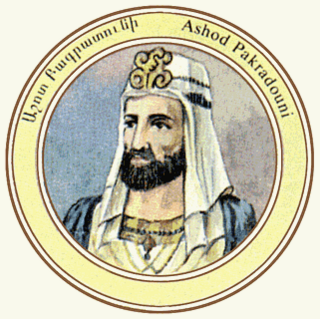Related Research Articles

Kavad I was the Sasanian King of Kings of Iran from 488 to 531, with a two or three-year interruption. A son of Peroz I, he was crowned by the nobles to replace his deposed and unpopular uncle Balash.

Peroz I was the Sasanian King of Kings of Iran from 459 to 484. A son of Yazdegerd II, he disputed the rule of his elder brother and incumbent king Hormizd III, eventually seizing the throne after a two-year struggle. His reign was marked by war and famine. At his accession, he successfully quelled a rebellion in Caucasian Albania in the west, and put an end to the Kidarites in the east, briefly expanding Sasanian rule into Tokharistan, where he issued gold coins of himself at Balkh. Simultaneously, Iran was suffering from a seven-year famine. He soon clashed with the former subjects of the Kidarites, the Hephthalites, who possibly had previously helped him to gain his throne. He was defeated and captured twice by the Hephthalites and lost his recently acquired possessions.

Balash was Sasanian King of Kings of Iran from 484 to 488. He was the brother and successor of Peroz I, who had been defeated and killed by a Hephthalite army near Balkh.

Jamasp was Sasanian King of Kings of Iran from 496 to 498/9. He was a son of Peroz I and younger brother of Kavad I. Jamasp was installed on the Sasanian throne upon the deposition of the latter by the nobility and clergy.

Ashot I was an Armenian king who oversaw the beginning of Armenia's second golden age. He was known as Ashot the Great and was the son of Smbat VIII the Confessor and was a member of the Bagratuni Dynasty.

Sasanian Armenia, also known as Persian Armenia and Persarmenia, may either refer to the periods where Armenia was under the suzerainty of the Sasanian Empire, or specifically to the parts of Armenia under its control such as after the partition of 387 when parts of western Armenia were incorporated into the Roman Empire while the rest of Armenia came under Sasanian suzerainty whilst maintaining its existing kingdom until 428.

The Hephthalite–Sasanian War of 484 was a military confrontation that took place in 484 between an invading force of the Sasanian Empire under the command of Peroz I and a smaller army of the Hephthalite Empire under the command of Khushnavaz. The battle was a catastrophic defeat for the Sasanian forces who were almost completely wiped out. Peroz, the Sassanid king, was killed in the action.

Vahan Mamikonian was an Armenian nobleman from the Mamikonian family. In 481 he rebelled against the Sasanian Empire that controlled the eastern part of Armenia known as Persian Armenia. He was appointed as marzban (governor) of Persian Armenia in 485 and remained in that post until his death around 503-510.
Adhur Gushnasp was the marzban ("margrave") of the Sasanian province of Armenia from 465 to 482. He was killed during the Armenian rebellion of 482–484, and replaced by Sahak II Bagratuni.
Vard Mamikonian was an Armenian nobleman from the Mamikonian family. He served as the marzban of Persian Armenia from 505/510 to 509/514.

Sukhra was an Iranian nobleman from the House of Karen, who was the de facto ruler of the Sasanian Empire from 484 to 493. He was active during the reign of shah Peroz I, Balash and Kavad I. He is often confused with his father Zarmihr Hazarwuxt and son Zarmihr Karen.
Tan-Shapur was a Sasanian nobleman who served as Marzban of Persian Armenia from 552/554 to 560.
Varsken was an Iranian prince from the Mihranid family of Gugark, who served as the bidaxsh (margrave) of the region from 470 to 482. He was the son and successor of Arshusha II.
Shapur Mihran, known in Armenian sources as Shapuh Mihran, was a Sasanian nobleman from the House of Mihran. He served as the marzban of Persian Armenia briefly in 482.
Sahak II Bagratuni, was an Armenian nobleman from the Bagratuni Dynasty. He served as the marzban of Persian Armenia briefly in 482.
Zarer was a Sasanian prince who attempted to seize the throne from his brother Balash in 485. He only appears in the work of the contemporary Armenian historian Ghazar Parpetsi. After the death of Peroz I, Balash was elected as king by the nobility and clergy. Zarer, dissatisfied with the election, rebelled. Balash was thus forced to make peace with his enemy Vahan Mamikonian and sent him at the head of an army to suppress the rebellion of Zarer. Zarer was shortly defeated, and fled to the mountains, but was quickly captured and "shot down like an animal".

Harev, was a Sasanian province in Late Antiquity, that lay within the kust of Khorasan. The province bordered Kushanshahr in the west, Abarshahr in the east, Marv in the north, and Sakastan in the south.
Zarmihr Karen was an Iranian nobleman from the House of Karen, who served as the Sasanian governor of Zabulistan. He was the son of Sukhra.

Sukhra's Hephthalite campaign took place in 484 between the Hephthalites and the Sasanian Empire.
References
- ↑ Selon Marie-Félicité Brosset, d'autres historiens reportent l'année du meurtre de la princesse à 475.
- ↑ ( Grousset 1947 , pp. 216–223).
- ↑ KAWĀD I i. Reign, Nikolaus Schindel, Encyclopaedia Iranica